News
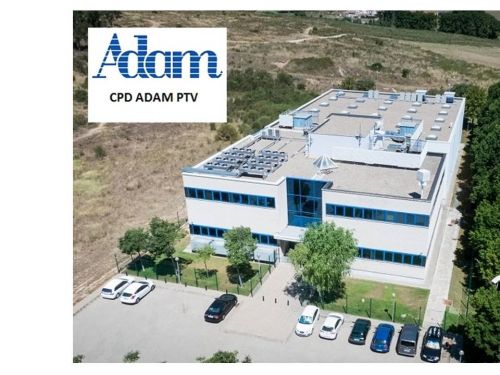
09/12/2014
ADAM involved in the project of shared DC between Malaysia and Catalonia
ADAM involved in the project of shared DC between Malaysia and Catalonia
One of the Barcelona Synchrotron Park (BSP) challenges is to become a worldwide reference cluster for Data Centres (DC).
In this perspective, the BSP currently works with Cyberjaya, a city near Kuala Lumpur, in order to create a shared DC between Catalonia and Malaysia.
This project involves NTT Communications in Malaysia and ADAM in Catalonia.
ADAM is a Spanish company specialized in tailor made ICT solutions. One of its DCs is located in the Vallès Technology Park (PTV), right next to the BSP.
Thanks to this DC provided by ADAM to complete the Proof of Concept, companies from both continents will have in the future a high quality point to point connection to transfer and save data between South West Europe and South East Asia.
More information: Guy Molénat, BSP
In this perspective, the BSP currently works with Cyberjaya, a city near Kuala Lumpur, in order to create a shared DC between Catalonia and Malaysia.
This project involves NTT Communications in Malaysia and ADAM in Catalonia.
ADAM is a Spanish company specialized in tailor made ICT solutions. One of its DCs is located in the Vallès Technology Park (PTV), right next to the BSP.
Thanks to this DC provided by ADAM to complete the Proof of Concept, companies from both continents will have in the future a high quality point to point connection to transfer and save data between South West Europe and South East Asia.
More information: Guy Molénat, BSP
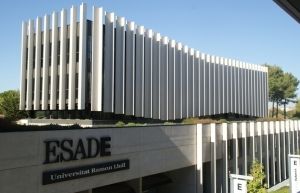
02/12/2014
ESADE, 4th best business school in Europe
ESADE, 4th best business school in Europe
The first benefit the Barcelona Synchrotron Park offers to high-tech companies for setting up in the park, is its open innovation-friendly environment: within a radius of few kilometres, the ALBA synchrotron, of course, the top-level UAB university, 30 research institutes, technology transfer centres, incubators, a dense network of more than 10,000 companies, etc.
In this ecosystem, the ESADE-CREAPOLIS centre, which was created by the famous ESADE business school, promotes innovation, spin-off and start-up companies creation and helps companies grow thanks to advising and a business accelerator. This centre also hosts different MBA.
According to the last European Business Schools 2014 ranking published by the Financial Times on November 30, ESADE ranks 4th just behind the London Business School, HEC (Paris) and IE (Madrid): congratulations!
Image: www.totsantcugat.cat
In this ecosystem, the ESADE-CREAPOLIS centre, which was created by the famous ESADE business school, promotes innovation, spin-off and start-up companies creation and helps companies grow thanks to advising and a business accelerator. This centre also hosts different MBA.
According to the last European Business Schools 2014 ranking published by the Financial Times on November 30, ESADE ranks 4th just behind the London Business School, HEC (Paris) and IE (Madrid): congratulations!
Image: www.totsantcugat.cat
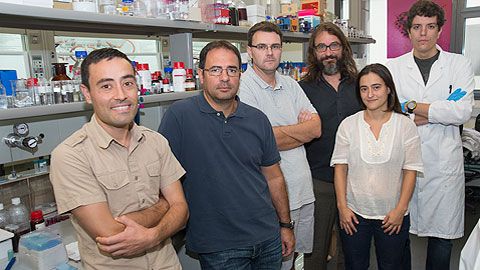
25/11/2014
Nanoparticle technology triples the production of biogas
Nanoparticle technology triples the production of biogas
Researchers of the Catalan Institute of Nanoscience and Nanotechnology (ICN2) and the Universitat Autònoma de Barcelona (UAB) the Barcelona Synchrotron Park works with, have developed the new BiogàsPlus, a technology which allows increasing the production of biogas by 200% with a controlled introduction of iron oxide nanoparticles to the process of organic waste treatment.
The development of BiogàsPlus was carried out by the ICN2's Inorganic Nanoparticle group, led by ICREA researcher Víctor Puntes, and by the Group of Organic Solid Waste Composting of the UAB School of Engineering, directed by Antoni Sánchez.
The system is based on the use of iron oxide nanoparticles as an additive which "feeds" the bacteria in charge of breaking down organic matter. This additive substantially increases the production of biogas and at the same time transforms the iron nanoparticles into innocuous salt.
The now patented BiogàsPlus technology received in 2011 a 100,000 dollar grant from the Bill & Melinda Gates Foundation. The grant money went towards testing the capacity of iron oxide nanoparticles, which helped to verify the efficacy of its application in a pilot 100 litre digester.
Extract from the press release issued by the UAB.
Image UAB: the researchers behind BiogàsPlus, from left to right: Eudald Casals, Xavier Font, Antoni Sánchez, Víctor Puntes, Raquel Barrena and Martí Busquets.
The development of BiogàsPlus was carried out by the ICN2's Inorganic Nanoparticle group, led by ICREA researcher Víctor Puntes, and by the Group of Organic Solid Waste Composting of the UAB School of Engineering, directed by Antoni Sánchez.
The system is based on the use of iron oxide nanoparticles as an additive which "feeds" the bacteria in charge of breaking down organic matter. This additive substantially increases the production of biogas and at the same time transforms the iron nanoparticles into innocuous salt.
The now patented BiogàsPlus technology received in 2011 a 100,000 dollar grant from the Bill & Melinda Gates Foundation. The grant money went towards testing the capacity of iron oxide nanoparticles, which helped to verify the efficacy of its application in a pilot 100 litre digester.
Extract from the press release issued by the UAB.
Image UAB: the researchers behind BiogàsPlus, from left to right: Eudald Casals, Xavier Font, Antoni Sánchez, Víctor Puntes, Raquel Barrena and Martí Busquets.
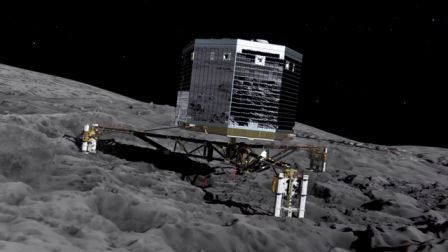
13/11/2014
A little piece of SENER on comet 67P
A little piece of SENER on comet 67P
The Philae Lander separated from its mothership Rosetta probe, finally landed yesterday on comet 67P after two rebounds: “Philea is already doing science” European Space Agency (ESA) engineer Emmet Fletcher confirmed today.
SENER with its Barcelona offices located in the Barcelona Synchrotron Park, has contributed to this ambitious and successful European project: SENER has participated both in the probe’s platform and its payload. With regards to the platform, SENER supplied the active thermal control louvres, the boom for the instrument deployment and the optical screens for the cameras and the star trackers. In the payload, it contributed to the OSIRIS cameras as well as the GIADA electronics.
Congratulations to ESA and SENER!
News based on the press release issued by SENER
Image: European Space Agency - ESA
SENER with its Barcelona offices located in the Barcelona Synchrotron Park, has contributed to this ambitious and successful European project: SENER has participated both in the probe’s platform and its payload. With regards to the platform, SENER supplied the active thermal control louvres, the boom for the instrument deployment and the optical screens for the cameras and the star trackers. In the payload, it contributed to the OSIRIS cameras as well as the GIADA electronics.
Congratulations to ESA and SENER!
News based on the press release issued by SENER
Image: European Space Agency - ESA
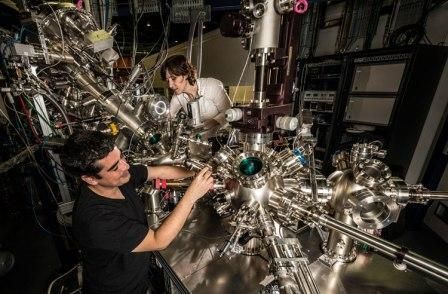
05/11/2014
New catalysts investigated with the ALBA Synchrotron
New catalysts investigated with the ALBA Synchrotron
A group of researchers, led by UPC university in Barcelona, which works on catalysts, has discovered that atoms react differently depending on the characteristics of the support that is used. Part of this study, which has been published on October 31 in the famous Science Magazine, was performed at the CIRCE beamline of ALBA Synchrotron.
The study is an important step forward in the design of new catalysts with applications in the field of energy: the catalyst investigated by the researchers contains metal (rhodium and palladium) nanoparticles and is very effective at producing hydrogen, a product that could replace fossil fuels and contribute to the energy transition.
News based on the press release issued by ALBA Synchrotron.
Image: ALBA Synchroton - Researchers Virginia Pérez-Dieste and Carlos Escudero at NAPP endstation of CIRCE beamline of ALBA Synchrotron
The study is an important step forward in the design of new catalysts with applications in the field of energy: the catalyst investigated by the researchers contains metal (rhodium and palladium) nanoparticles and is very effective at producing hydrogen, a product that could replace fossil fuels and contribute to the energy transition.
News based on the press release issued by ALBA Synchrotron.
Image: ALBA Synchroton - Researchers Virginia Pérez-Dieste and Carlos Escudero at NAPP endstation of CIRCE beamline of ALBA Synchrotron
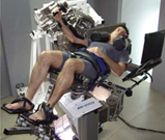
04/11/2014
SENER hosts a meeting with ESA, NASA and ROSKOSMOS in its offices in BSP
SENER hosts a meeting with ESA, NASA and ROSKOSMOS in its offices in BSP
The engineering and technology group SENER hosted on October 28 a top level meeting with department heads from the European, American and Russian space agencies (ESA, NASA and ROSKOSMOS respectively). Held at SENER’s offices in the Barcelona Synchrotron Park (BSP), the meeting has been convened to plan a joint experiment using the MARES (Muscle Atrophy Research and Exercise System) facility, which was designed by SENER and was installed in the Columbus module of the International Space Station (ISS) in 2010.
Information based on the press release issued by SENER
Image: SENER
Information based on the press release issued by SENER
Image: SENER









